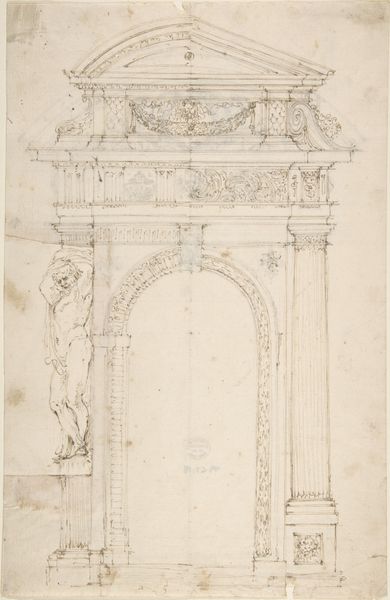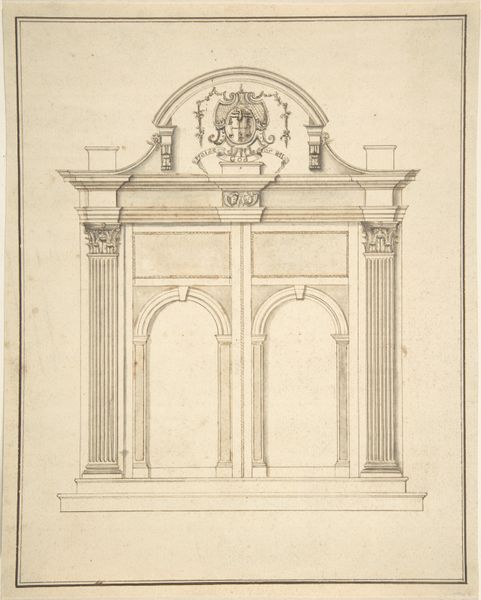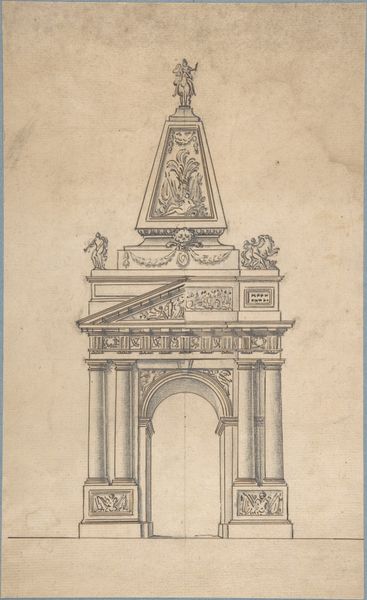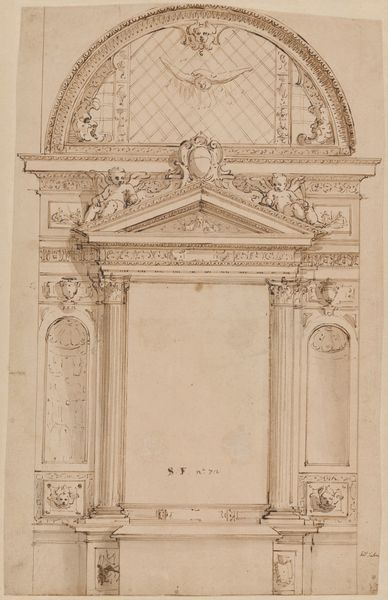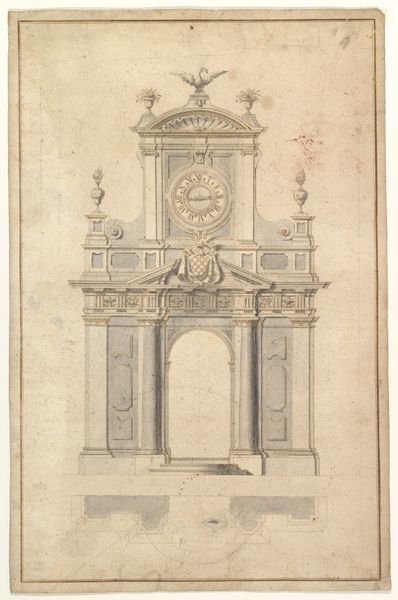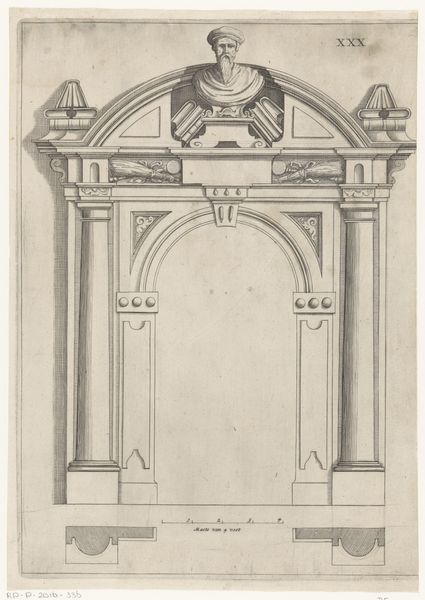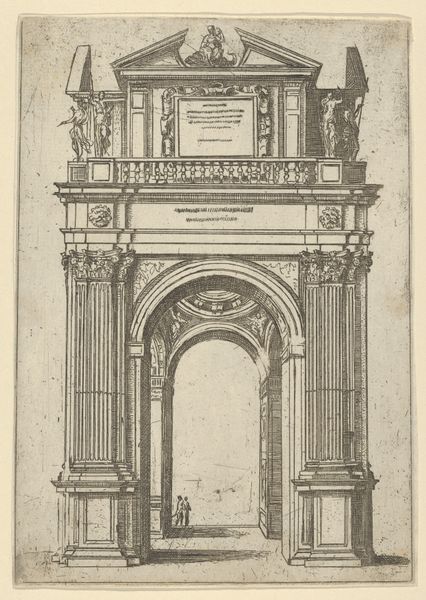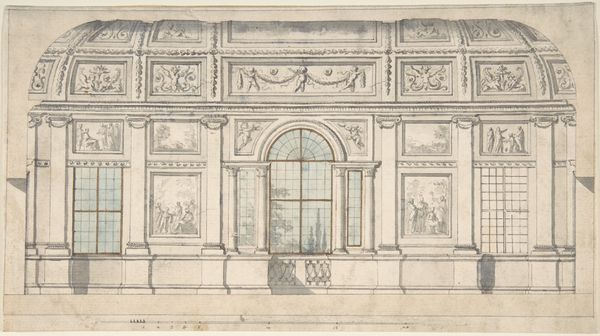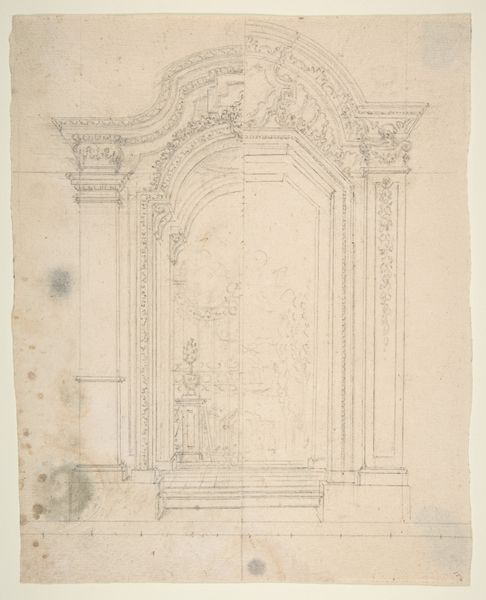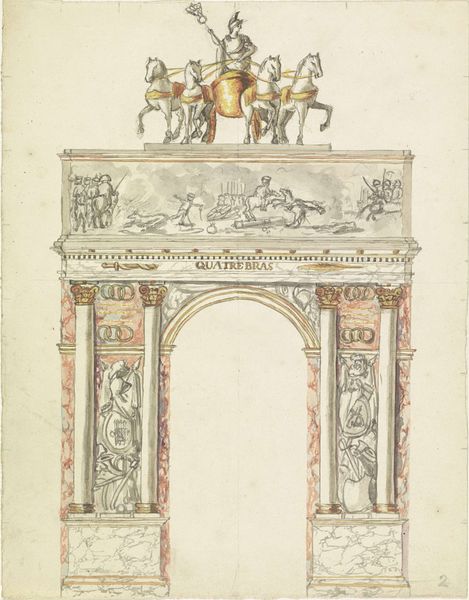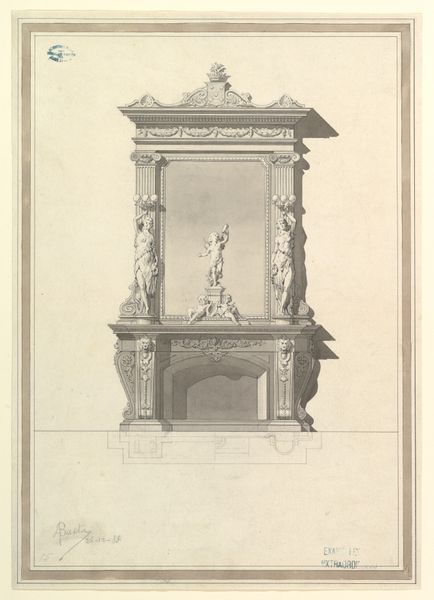
Design for the Triumphal Arch at the Porta Ticinese in Milan, with the Imperial Arms of the Hapsburg and Allegorical Figures 1633
0:00
0:00
drawing, print, etching, architecture
#
architectural sketch
#
drawing
#
allegory
#
baroque
# print
#
etching
#
etching
#
arch
#
architecture
Dimensions: 14 3/16 x 9 13/16 in. (36.1 x 25 cm)
Copyright: Public Domain
This is a design in pen and brown ink, made by Francesco Maria Richini for the Triumphal Arch at the Porta Ticinese in Milan. The arch was a symbolic structure, meant to represent the power and authority of the ruling Habsburg dynasty. The image is laden with visual codes of Imperial power. Note the Habsburg coat of arms at the apex of the arch, flanked by allegorical figures representing strength and victory. Below, the inscription space would have been used for propagandistic pronouncements. Milan, in the 17th century, was under Spanish Habsburg rule, a period marked by both grandeur and oppression. The arch would have served as a constant reminder of the city's subservience to foreign power. Richini, as the city's chief architect, was deeply embedded in the power structures of his time, and while this design served the interests of the Habsburgs, it also showcases Richini's mastery of the baroque style, which he used to redefine Milan's urban landscape. To understand this design, we must consider the political history of Milan, the role of the Habsburg dynasty, and the conventions of Baroque architecture.
Comments
No comments
Be the first to comment and join the conversation on the ultimate creative platform.
